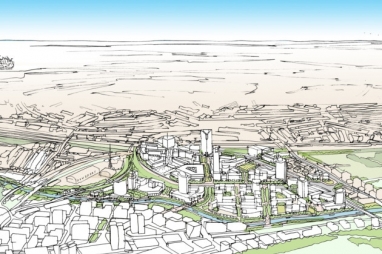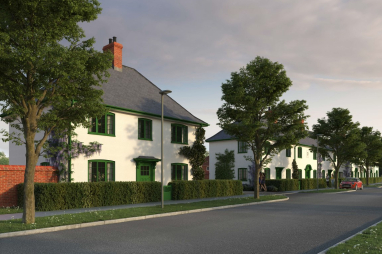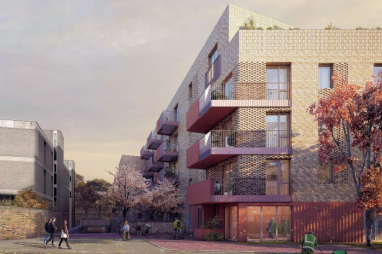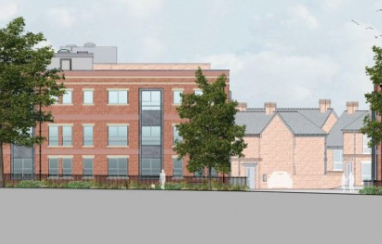- Платье, adidas Core 18 Длинные брюки , платье adidas — цена 598 грн в каталоге Короткие платья ✓ Купить женские вещи по доступной цене на Шафе, Украина #121602964
- Кросівки nike air jordan 1 low 'pine green' Raging Bull Toro Bravo 2021 DD0587 - SBD - 600 Release Date - AIR introducing JORDAN
- Nike’s Heidi O’Neill On Investments During COVID, Nike Training Icon Clash Dry Podkoszulek z logo Swoosh w panterkę, Zapping Zoom Fatigue – Mindarie-wa News
- nike junior av hooded top black white , Nike Air Yeezy Slippers
- nike air jordan 1 mid outlet
- 554725 113 air jordan 1 mid white black 2020 for sale
- air jordan spring 2021 retro collection release date info
- best nike basketball shoes
- Air Jordan 1 Blue Chill Womens CD0461 401 Release Date 4
- nike air force 1 low white gold dc2181 100 release date info
- Home
- News and analysis
- Info hubs
- Events
- Video
- Case Studies
- About us
- Magazine
- Advertising
Produced for the industry by the Association for Consultancy and Engineering
Comment
Stations can provide a platform for growth – if plans are realistic

Are station development zones the answer to regeneration? Keith Mitchell examines the promise and challenges of the rail-led approach
We have read much about rail-led development recently. First came the Outer London Commission report, Accommodating London’s Growth, which identified development around public transport corridors and hubs as a major opportunity to intensify land use.
Next came the Starter Homes Land Fund prospectus, launched by government at the time of the Budget, which identified stations as a key opportunity for regeneration – and last week saw the announcement of a deal between the Housing & Communities Agency and Network Rail, designed to encourage development around stations. While public transport-oriented development is hardly a new concept, it does seem that more policy and funding support is being targeted in this direction.
As someone who has been working in support of this agenda since before the publication of PPG13 in 1994, I welcome this. But why now?
Much is to do with the pressure on government to deliver against its own, very challenging, housing targets. It may also have to do with the need to provide better justification of its commitment to transport by taking account of wider regeneration benefits. However, not all the reasons are political.
There are good societal and demographic reasons too. more optimism about the attractiveness of development around rail hubs. We are moving in the right direction towards a more sustainable pattern of development. However, a rail-based growth strategy is not without its challenges. Development around rail hubs can present exceptional cost, viability and deliverability issues. For example, rail-led development will lead (we hope!) to increasing use of the already creaking rail network. Sites often require remediation, are physically constrained with railway interfaces that need careful management; and highway access issues still need to be dealt with.
These are not trivial issues. We need complete realism about the costs and risks of development around stations. This needs to be considered early, so that the impact on achievable land value is understood at the outset. Successes are needed There are enough examples of rail investment or proximity failing to result in viable outcomes to make developers and investors nervous of the rail-led approach – particularly outside London.
Despite this, there are welcome moves towards the use of wider regeneration benefits in appraising the business case of rail investment. But without a strong track record, there will be limits to how this is taken into account, creating a vicious circle of declining confidence – rather than the virtuous circle we are after, in which investment and development are symbiotic partners in delivering growth. Future plans must encompass both the railway infrastructure, and the development it is supposed to stimulate.
Leadership and collaboration between local authorities, developers and infrastructure providers will be critical – from beginning to end of the process. Perhaps we need to introduce the concept of a station development zone through which the leadership and partnership arrangements can be determined, and the necessary planning, land and funding arrangements can be established. I’m not one for creating governance structures for the sake of it, but it just might help to provide the necessary certainty of vision and flexibility of framework for development to be brought forward with greater confidence.
Stations can provide a platform for growth – if plans are realistic Leeds station is one of many sites pinpointed for intensive housing development. For example, research by the Independent Transport Commission shows decreasing dependence on cars by young men, and decreasing use of cars for business travel, probably driven by cost and changes in tax regimes. The National Travel Survey confirms that rail travel has doubled over the past 20 years, and as the highway network reaches saturation during peak hours. Car use beats car ownership Looking forward, with major population increases forecast, it would seem logical to assume these trends will continue.
The ITC’s 2015 research into attitudes to travel reinforces this point, suggesting that the use of urban transit systems is seen by the younger generation as an important part of a more mobile and connected lifestyle, in which access to a car is perceived as being more important than ownership. Perhaps these trends are creating more optimism about the attractiveness of development around rail hubs.
We are moving in the right direction towards a more sustainable pattern of development. However, a rail-based growth strategy is not without its challenges. Development around rail hubs can present exceptional cost, viability and deliverability issues.
For example, rail-led development will lead (we hope!) to increasing use of the already creaking rail network. Sites often require remediation, are physically constrained with railway interfaces that need careful management; and highway access issues still need to be dealt with.
These are not trivial issues. We need complete realism about the costs and risks of development around stations. This needs to be considered early, so that the impact on achievable land value is understood at the outset. Successes are needed There are enough examples of rail investment or proximity failing to result in viable outcomes to make developers and investors nervous of the rail-led approach – particularly outside London.
Despite this, there are welcome moves towards the use of wider regeneration benefits in appraising the business case of rail investment. But without a strong track record, there will be limits to how this is taken into account, creating a vicious circle of declining confidence – rather than the virtuous circle we are after, in which investment and development are symbiotic partners in delivering growth.
Future plans must encompass both the railway infrastructure, and the development it is supposed to stimulate. Leadership and collaboration between local authorities, developers and infrastructure providers will be critical – from beginning to end of the process.
Perhaps we need to introduce the concept of a station development zone through which the leadership and partnership arrangements can be determined, and the necessary planning, land and funding arrangements can be established. I’m not one for creating governance structures for the sake of it, but it just might help to provide the necessary certainty of vision and flexibility of framework for development to be brought forward with greater confidence.
Keith Mitchell is chairman of Peter Brett Associates, a member of the Outer London Commission and a board member of the National Infrastructure Planning Association






Comments